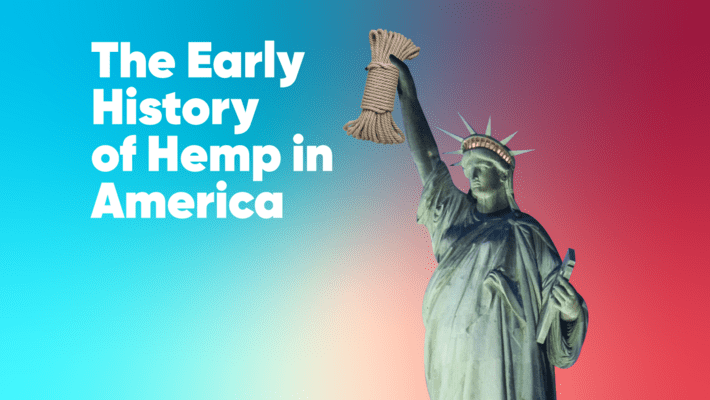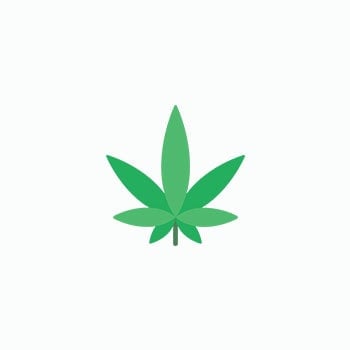
The Early History of Hemp in America
Published on 10/26/22
Most stoners are aware of how long cannabis plants have been used in history. Facts and urban legends often mix into one when talking about the history of cannabis, yet it is absolutely accurate that for thousands of years, this plant has been used for many purposes. Only within the past century has it become criminalized; prior to this, it was very common in many places and times. Hemp, the male version of cannabis, has minimal THC compared to female marijuana plants. Yet it remains illegal on a federal level, no different from cocaine. The history of hemp in the United States demonstrates the foolishness of these prohibition laws, as it has been a widespread useful plant for far longer than it has been criminalized. Here is a brief history of hemp in America.
Native Roots
Where did hemp originate? Primarily in parts of central Asia, including the region known as the Hindu Kush, moving both west to the Mediterranean and east to the Pacific. It crossed the boundaries into the Americas as people did, meaning that the history of hemp in the U.S. dates back thousands of years. Native Americans valued the toughness of hemp fiber, finding it beneficial for making durable materials, such as clothing, blankets, or rugs.
With European colonization came more intensive cultivation. What is hemp used for in the colonial era? It was primarily known for its value in creating fiber. In modern society, we can make synthetic fibers easily and quickly, but long before factory machines existed, everyday materials needed to be created by plant fiber. Hemp was crucial for ropes in particular: a law in Jamestown in the early 1600s stipulated that colonists needed to grow hemp so there would be enough supplies to make rope. This was true for many colonies, especially those close to the ocean, given how much rope was necessary for ships.
Colony to Nation
 Unsplash
UnsplashYour old history teachers probably never told you that the Founding Fathers were some of the first stoner engineers. Many of them who owned plantations, like Jefferson and Washington, grew hemp for much the same purpose as the first American colonists did centuries earlier. In fact, the Declaration of Independence was written on hemp paper, meaning the history of hemp is closely tied to the history of our entire nation.
Hemp cultivation only grew as the United States grew larger and more populous. Like many enterprising growers, today find, the American climate makes it possible to grow many strains and varieties of cannabis. Unlike the geographical divide in farming in the early republic, with northern farmers primarily growing food while southern farmers grew cash crops like cotton or tobacco, hemp was a universal plant. Due to its utility, it existed on many farms, from the very smallest to the very largest. Not only could it be used for fibers, but it also created very oily seeds at a time before petroleum was a common source of energy. Abraham Lincoln himself used hemp seed oil for his lamps, meaning that he might have smelled a whiff of the "skunk" smell while he was writing the Gettysburg Address. Throughout the 1800s and early 1900s, hemp production only increased as the Industrial Revolution created a massive demand for raw materials.
Criminalization and Legalization
Of course, as any pothead knows, once you cross into the early 1900s, the history of cannabis in America begins to shift toward prohibition. Greater and greater adoption of cannabis as a recreational drug meant greater hostility towards it. White Americans frequently saw the use of cannabis in racialized terms, fearing that non-white users (particularly black and Hispanic users) had the potential to use cannabis to corrupt whites, especially white children. These fears led to the outright criminalization of both hemp and marijuana in the 1920s and 1930s, the same time that alcohol was declared federally illegal. Unlike alcohol, however, marijuana remains a Schedule 1 narcotic at the federal level.
However, as with all trends, the animosity towards cannabis has since swung the other way drastically. As more states have decriminalized or even legalized cannabis use, so too has the hemp history timeline rebounded. The 2018 Farm Bill regulated hemp cultivation for the first time in a century, making it possible for farmers to grow hemp and then process it for CBD products, like creams and edibles. Hemp farmers need a particular license to grow and sell hemp, but as the "green rush" of cannabis industry expansion leads to increased revenue, these are becoming easier to obtain. In 2020, American hemp production exceeded 100,000 acres and became one of the market's most productive and lucrative crops.
Do you have any interest in the history of cannabis? Have you learned any fun facts about how our ancestors enjoyed this plant? Let us know in the comments below!
